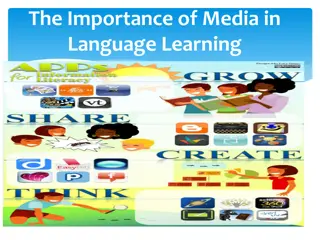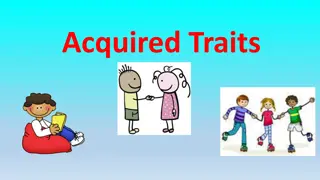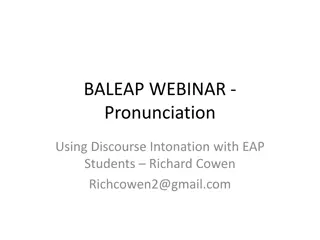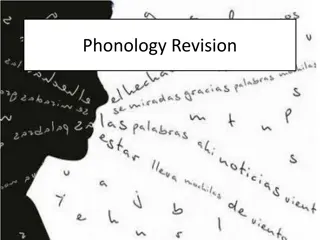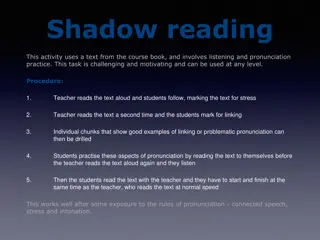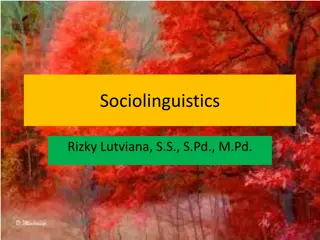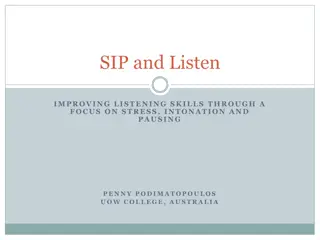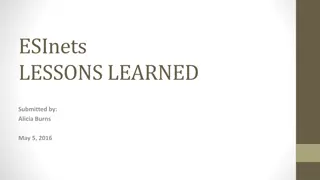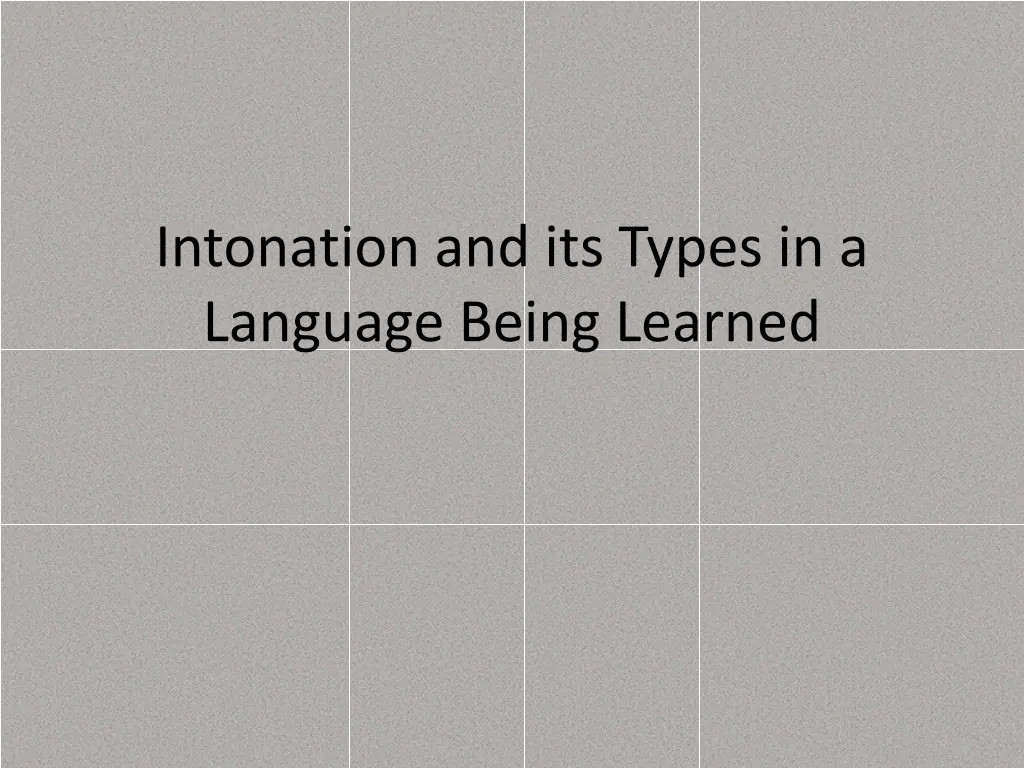
Understanding Intonation in Language Learning
Explore the importance of intonation in spoken language, learn about different types of intonation patterns, and understand how intonation affects meaning, emotion, and communication effectiveness in language learning.
Download Presentation

Please find below an Image/Link to download the presentation.
The content on the website is provided AS IS for your information and personal use only. It may not be sold, licensed, or shared on other websites without obtaining consent from the author. If you encounter any issues during the download, it is possible that the publisher has removed the file from their server.
You are allowed to download the files provided on this website for personal or commercial use, subject to the condition that they are used lawfully. All files are the property of their respective owners.
The content on the website is provided AS IS for your information and personal use only. It may not be sold, licensed, or shared on other websites without obtaining consent from the author.
E N D
Presentation Transcript
Intonation and its Types in a Language Being Learned
Intonation and its Types in a Language Being Learned Plan: The importance of intonation in spoken language. Defining intonation and its scope. Purpose and objectives of the presentation.
1. Introduction Importance of Intonation: Intonation plays a vital role in spoken language, contributing to meaning, emotion, and overall communication effectiveness. Definition: Intonation is the melody or pattern of pitch changes in speech. Purpose: To explore different types of intonation, their functions, and their relevance to language learners. 2. Basic Concepts in Intonation Definition: Intonation is the way that pitch changes when we speak. Key Elements: Pitch: The highness or lowness of a tone in o
3. Functions of Intonation** **Overview:** Intonation affects more than just the sound of speech; it affects the overall meaning and context of the message. * **Grammatical function:** Marks boundaries between clauses and sentences. * **Attitudinal function:** Conveys emotions and feelings (e.g., surprise, happiness, sadness). * **Discourse function:** Distinguishes old from new information. * **Pragmatic function:** Can signal politeness, sarcasm, or disagreement. **Examples:** The same sentence can convey a different meaning depending on the way its intonation is used.
4. Types of Intonation Patterns** **Classification:** Different ways pitch can change in connected speech. * **Falling Intonation:** Pitch descends towards the end of a phrase or sentence. * **Rising Intonation:** Pitch increases towards the end of a phrase or sentence. * **Fall-Rise Intonation:** Pitch falls and then rises. * **Rise-Fall Intonation:** Pitch rises and then falls. * **Level Intonation:** Pitch remains relatively constant without any significant change in direction. **Description:** Each of these pitch patterns convey different meanings and purposes. **Examples:** * Falling for normal statements; rising for questions, fall-rise for uncertainty.
5. Intonation in Questions** **How Intonation is Used:** * **Yes/No Questions:** Often have a rising intonation at the end (e.g., "Are you coming?"). * **Wh-Questions:** Typically have a falling intonation (e.g., "What time is it?"). * **Tag Questions:** Have a rising or falling intonation depending on the level of certainty or politeness (e.g., "It's nice, isn't it?"). * **Echo Questions:** Often have a rising intonation (e.g., He said what? ). **Contrast:** The rise in pitch signals an answer is required; the fall often signals that an answer is not expected. **Intention:** Intonation can change what is meant by the speaker. For example, a rising pitch in a wh-question can be a signal of surprise rather than request of information.
Intonation in Statements and Declarative Sentences** **How Intonation is Used:** * **Falling intonation:** Used to make general statements or convey facts (e.g., My name is John. ). * **Rising intonation:** Encourages agreement or conveys surprise (e.g., "Really?"). * **Variations:** Intonation changes the subtle meaning of an utterance. **7. Challenges in Learning Intonation** **Difficulties:** Learners may not be able to easily detect intonation patterns, and may have difficulties with production. **Common Errors:** Using intonation patterns from their first language in their second language, which can cause misunderstandings. **Impact of L1:** First language intonation patterns can cause errors in second language intonation. **Teaching:** It requires explicit instruction in the form of modelling, practice and corrective feedback.
Conclusion** **Summary:** Intonation is the use of pitch in spoken language, and can affect the meaning, intention, and emotion of a spoken message. **Significance:** Intonation is a key aspect of effective communication. **Implications:** The teaching and learning of intonation should be a central part of language teaching and learning, since it contributes to the overall clarity and effectiveness of spoken language. Use audio examples to illustrate different intonation patterns. Include visual aids such as intonation contours. Define all key terms clearly. Encourage active practice of the intonation patterns. Connect concepts to practical language learning and communication situations.


